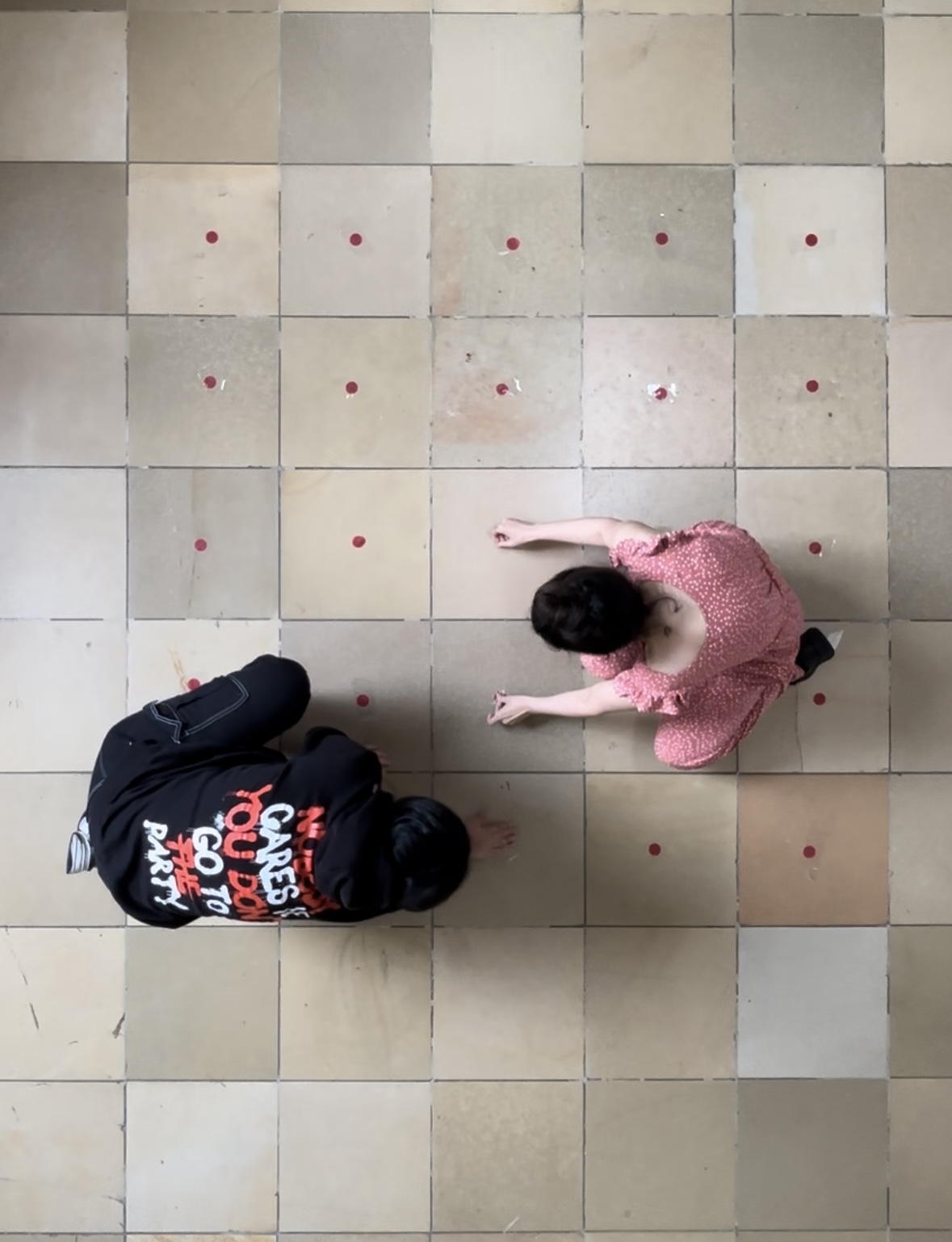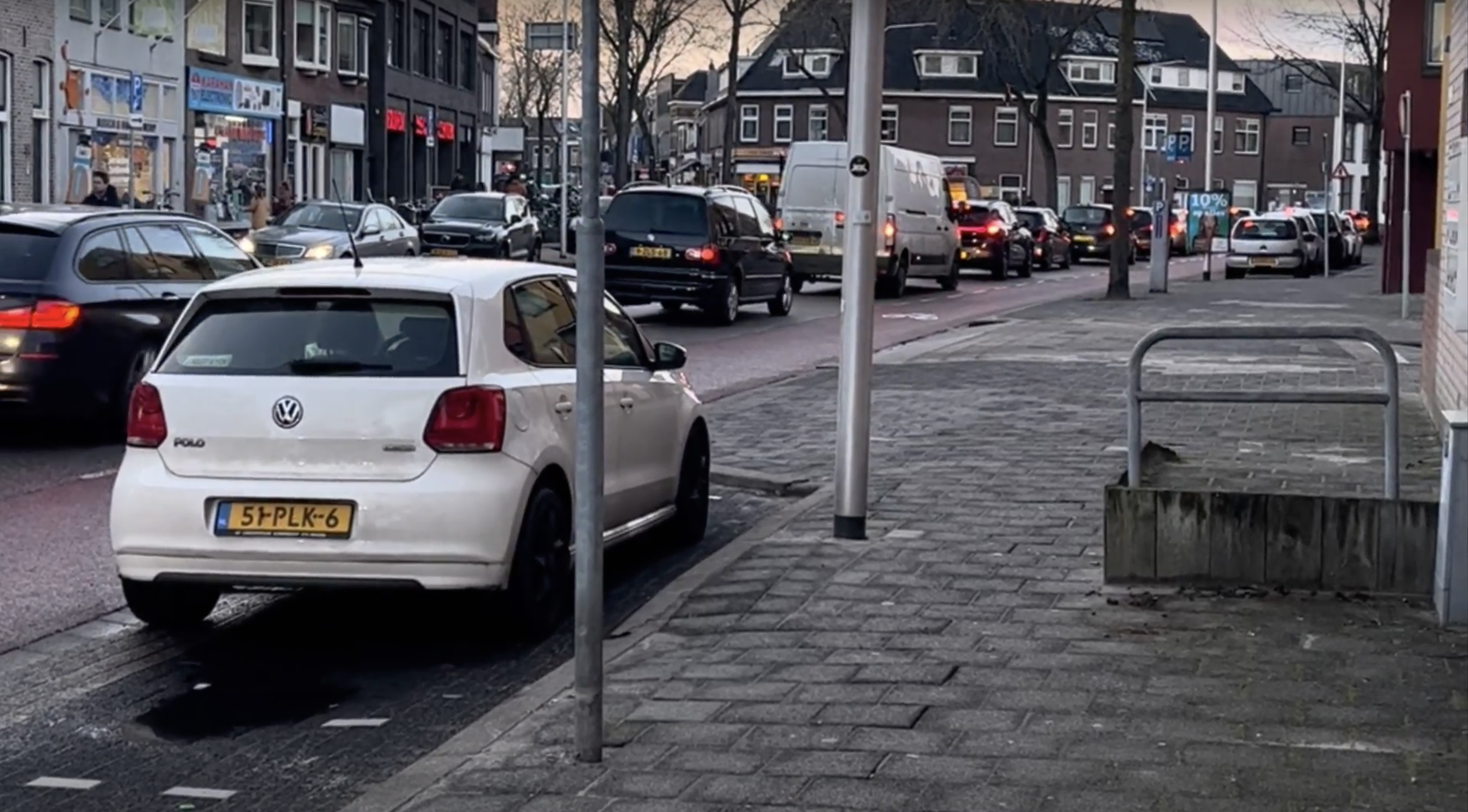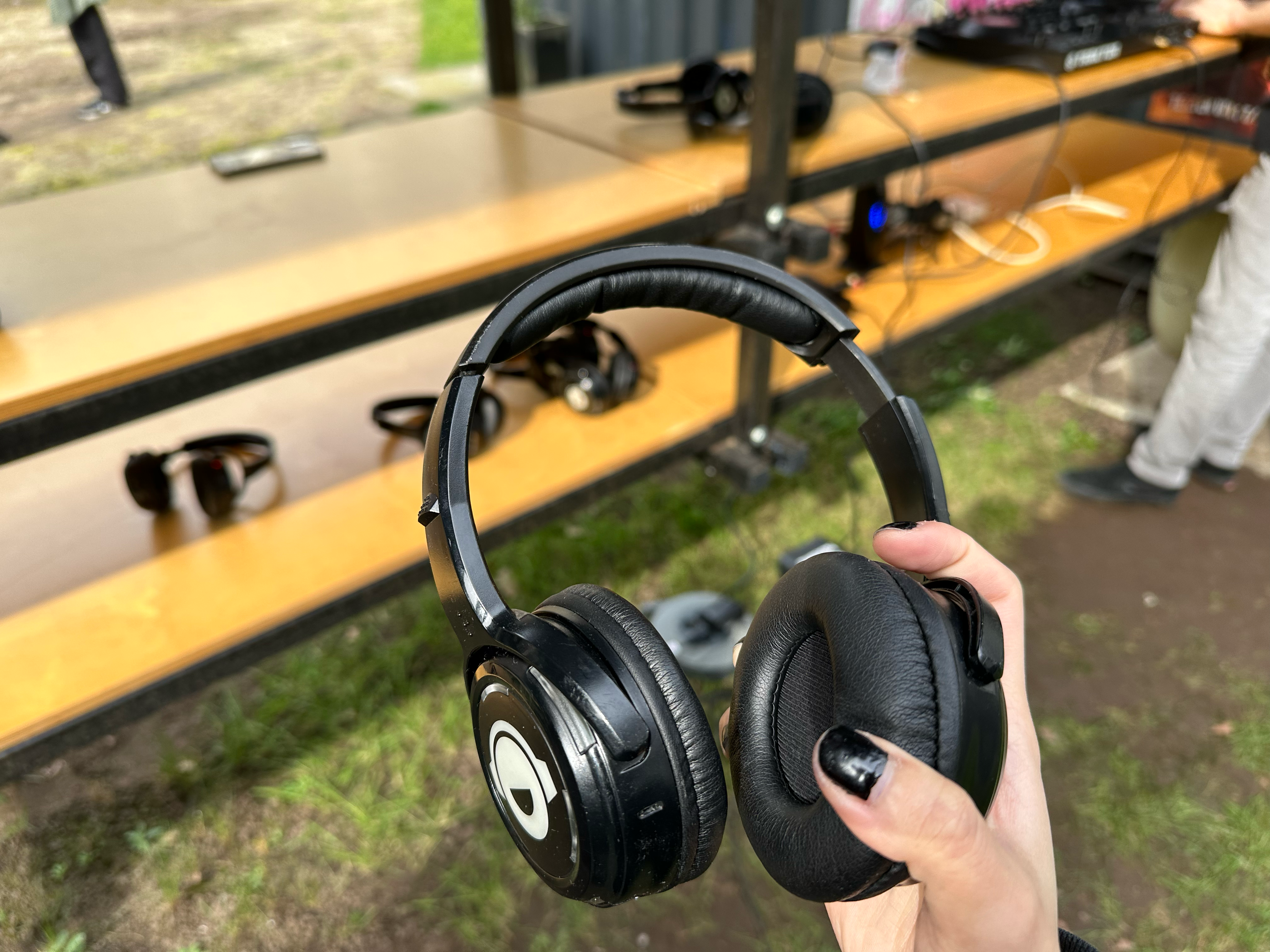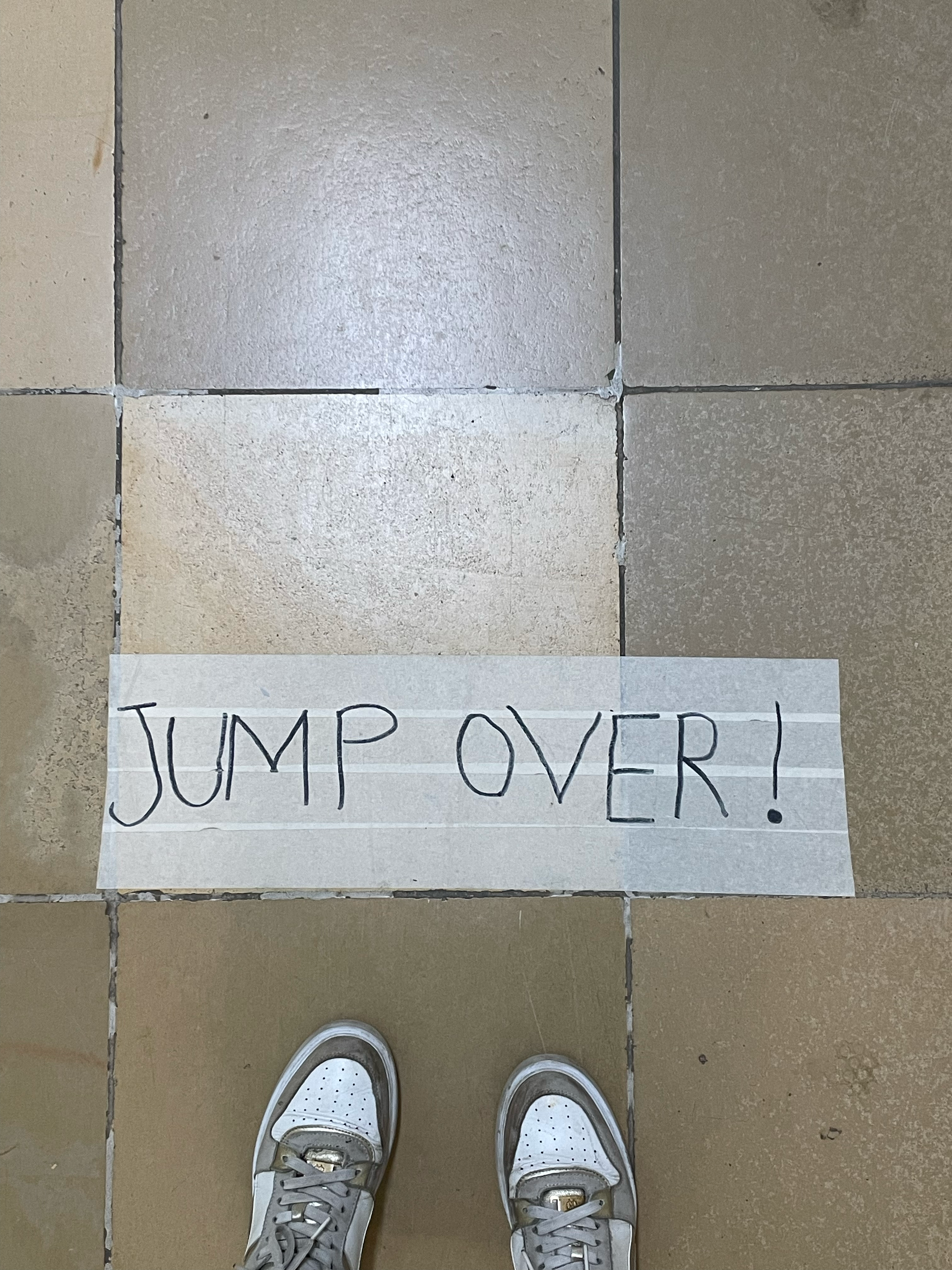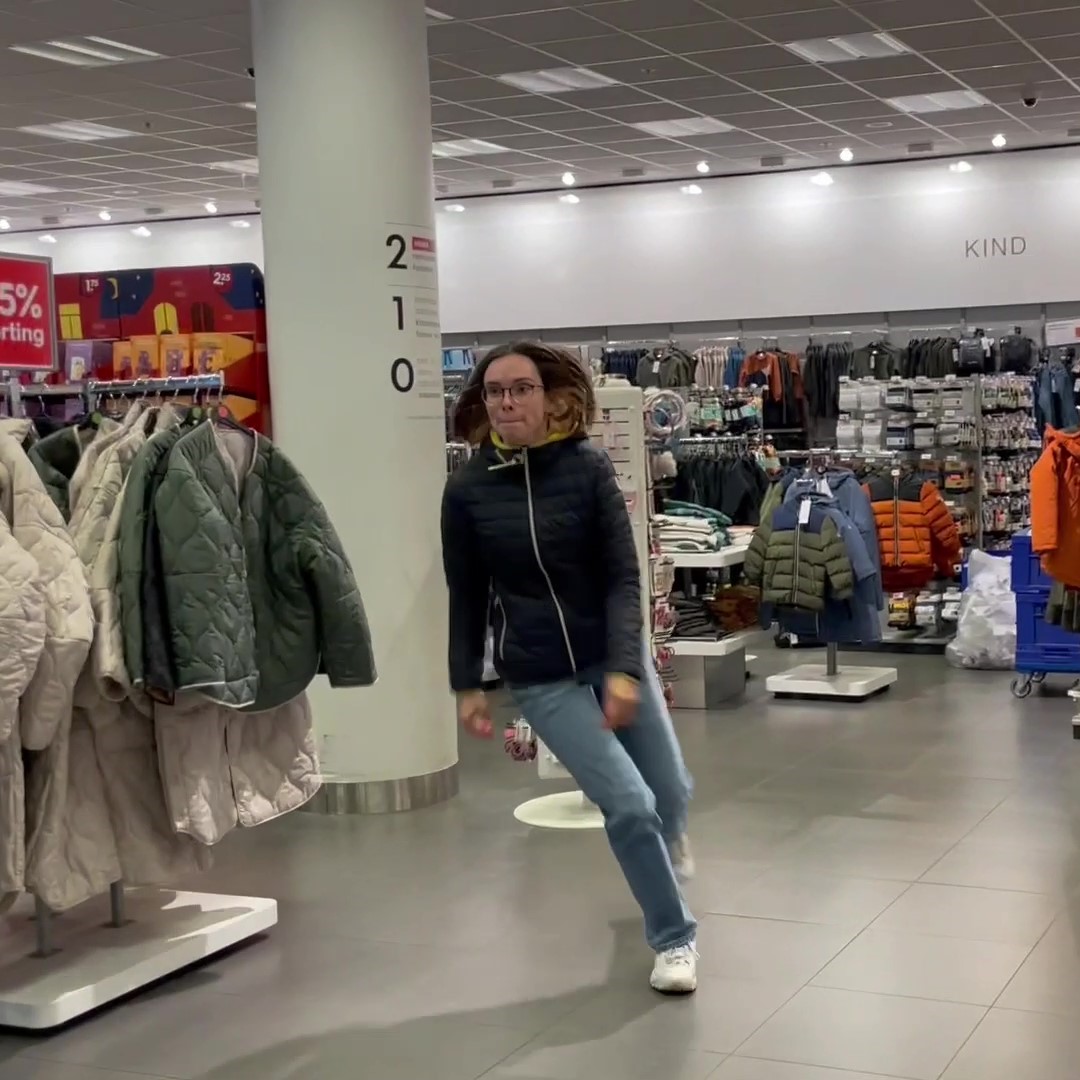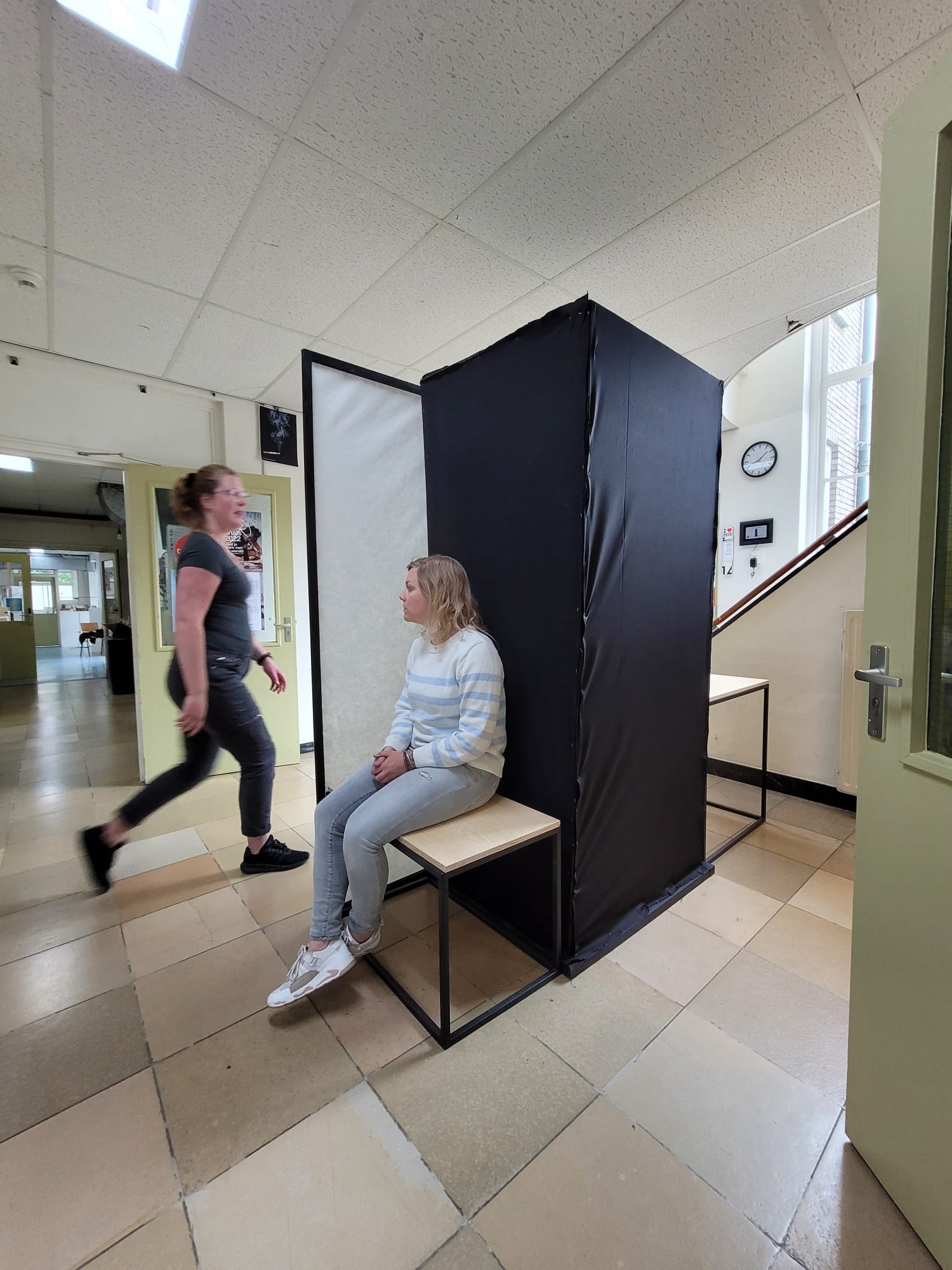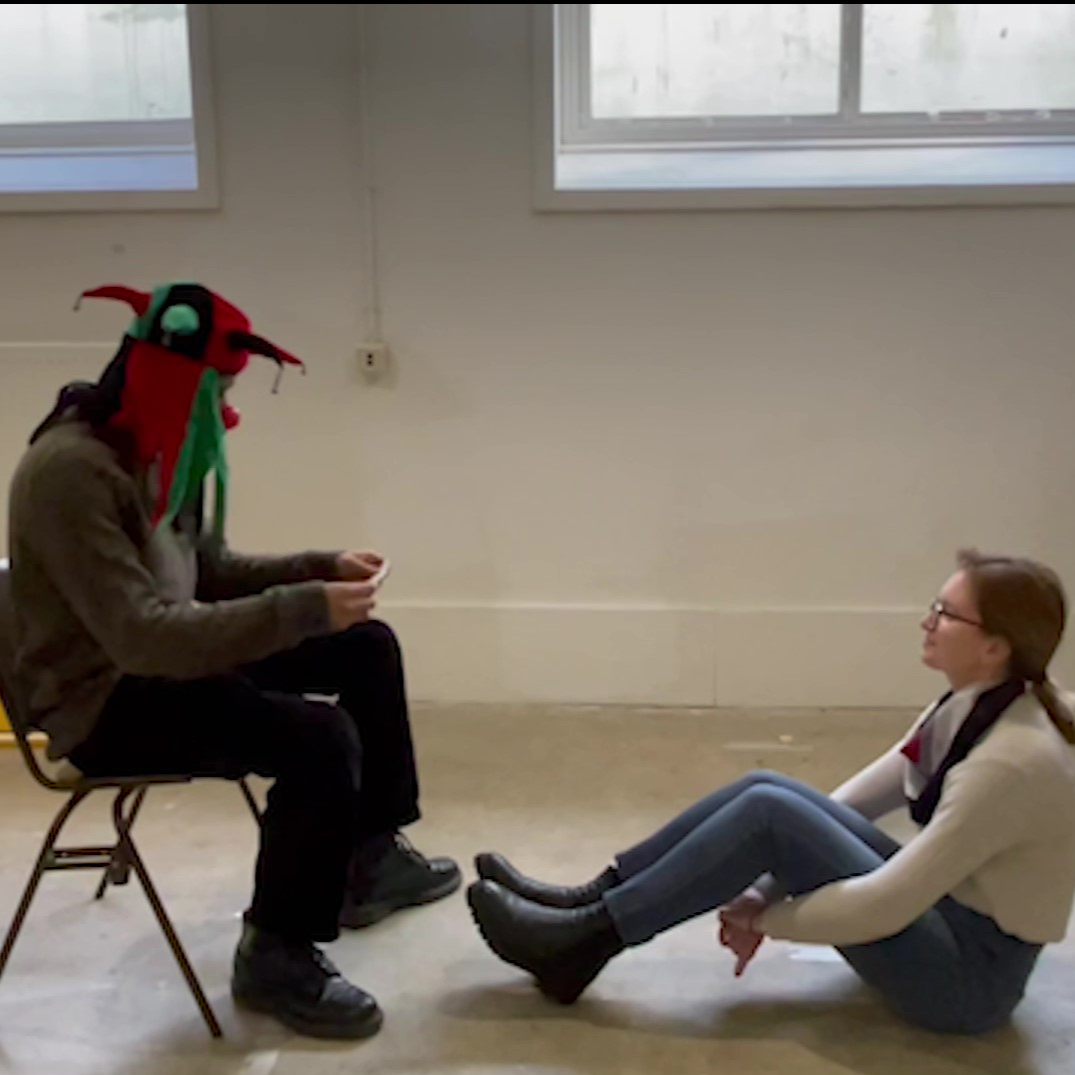Research question
How can sound inform wayfinding in space?
Can the sounds from powerful places be applied to other spaces and have a similar effect?
Experiment
To answer this question we first had to understand what kinds of sounds we hear in everyday life that cause us to react in certain ways. We made a collection of “good” and “bad” sounds, including soft windchimes and loud buzzers. We then created a small maze to create an opportunity for free-choice movement. Participants were asked to navigate this space with a pair of headphones on. The headphones were connected to the researcher’s phone. The researcher observed the participants moving through the maze and selected “good” or “bad” sounds to guide the participants to walk a specific path.
For the second iteration of this experiment, we used the sounds from powerful and non-powerful spaces to guide participants. For this version, however, we used the sounds to guide participants to a particular area in the maze instead of trying to control the paths they took.
Findings
In the first iteration of the experiment, although the participants noted that the sounds did have the intended “good” and “bad” effect, none of them followed the intended path.
The results from the second iteration of the experiment better matched our expectations. Interestingly, participants noted their associations with the sounds made them feel monitored or free depending on the sound. We continue to explore this aspect of what power in a space means. In what settings does sound empower? In which settings does silence empower?

